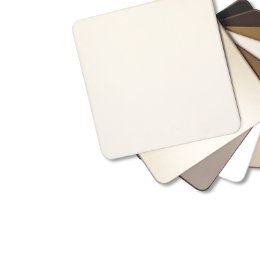Ryerson University Student Learning Centre

Student Learning Centre
Ryerson University
Toronto, ON, Canada
| Project: | Ryerson University Student Learning Centre |
|---|---|
| Location: | Toronto, Ontario, Canada |
| Fabricator: | Flynn Canada |
| Installer: | Flynn Canada |
| Architect | Zeidler Partnership Architects in association with Snøhetta |
| Exterior Panel Manufacturer: | ALPOLIC Materials/Mitsubishi Chemical America |
| Product: | ALPOLIC®/fr fire-resistant aluminum composite material |
| Coating: | Lumiflon® FEVE in Custom ALPOLIC SEP Prismatic Blue Valfon® coatings supplied by Sherwin-Williams |
| Completion: | August 2014 |
| Industry: | Architectural - Education |
It’s said that Ryerson University can be found at the intersection of Mind and Action. Ryerson’s new Student Learning Centre can certainly be found there, although the actual street address is the intersection of Yonge and Gould, in the busy heart of Toronto, one of the world’s most vibrant and diverse cities.
Mohamed Lachemi, Ryerson University’s provost and vice president academic, says the Student Learning Centre project was already engaging the minds and actions of Ryerson students long before the first shovel was turned. “Students are part of everything we do at Ryerson,” Lachemi says. “Student groups in the hundreds were involved in the initial discussion about the building, the nature of the building, and also the function the building provides.”

In 2009, a competition was held to choose a design team to make what the students envisioned a reality. Zeidler Partnership Architects , a leading Canadian firm, joined forces with the celebrated international firm Snøhetta win the competition. With Zeidler’s Mike Smith and Snøhetta’s Michael Cotton leading the project, the team created the design for a remarkable eight-story, 155,463 square-foot LEED Gold-certified building.
Craig Dykers, architect and founder of Snøhetta, describes the design intent: “This is an incredibly vibrant building. It has a multitude of different types of spaces. It has quiet spaces, loud spaces, tall spaces, short spaces, wide spaces, narrow spaces. You name it, you’ll find it here. So everyone will be attracted to it for different reasons, which means it will be a centre for diverse thinking and diverse groups of people.”
A Crystalline Metaphor of Exploration
The attraction begins the moment you first encounter the building. With no exterior reference to the floors inside, the glass planes that form the building’s skin have been compared to a gemstone. The triple glazing incorporates complex frit patterns to control solar heat gain and glare while adding interest to the natural interior lighting. From outside, these patterns create a dynamic sheen that enhances the building’s gem-like appearance.
At the corner entrance, the gem is “fractured.” Here, the glass walls give way to multi-angled soffits composed of three-dimensional, faceted panels in prismatic blue. These panels evoke a molecular crystalline lattice as it might appear under a powerful microscope – an apt metaphor for the exploration and discovery that takes place inside.
This structural theme continues through the main entryway as the prismatic blue crystals create a domed ceiling above a two-story atrium that serves as a lobby, amphitheater and skybridge portal to the existing library.

Involving Building Experts in the Design
Flynn Canada, of the Flynn Group of companies, was selected to provide design-assist services as well as fabrication for the entire building envelope, a project that earned the firm the 2015 OGMA Award for Excellence in Architectural Glass and Metal Execution.
Don Delaney, an engineering and business development manager at Flynn, explains the value a design-assist relationship can add: “With these types of complex projects, the architect has the design intent, the concept and the finishes in mind, but it’s not reasonable for them to have all the answers for working out the fine details and exactly how things go together.”
Through the design-assist process, “The experts engage with the architect to develop those details and make something that’s buildable and on budget.”
Design Vision Stymied by Hard Realities
“Buildable and on budget” initially proved to be quite a challenge when designing the faceted blue forms at the entryway and in the atrium. The architects wanted to use a terracotta tile cast in three-dimensional forms with a glazed finish that would capture varying tones and glosses of blue. But as it turned out, the desired look couldn’t be achieved using tile.
Michael Roche, manager of business development and technical sales at Flynn, explains, “We couldn’t find a supplier who would agree to produce the tiles in that size. And then, from an engineering point of view, it’s very, very heavy. How do you attach it and so forth? So they asked if we could come up with any alternatives keeping the same shape and color.”
Flynn looked into glass-fiber reinforced plastic, or GFRP. But creating all the different molds that would be required, and waiting for each panel to individually cure, proved to be prohibitively expensive and time-consuming.
Next, they evaluated welded sheet aluminum, but again, the time and expense put that solution beyond reach. As Roche notes, “You had to cut all the pieces, weld them all together, polish all the welds and then try to come up with a paint that had the iridescent effect that we were trying to achieve. The thing about this is that there were 27 facets of panels on the building, and each panel within those facets was a different size and shape.”
“So we were kind of stymied,” Delaney recalls, “and it was one of the guys in our shop – I certainly can’t take credit, and Michael won’t take credit – one of the guys in the shop who programs our axis machine said, ‘Well, let me have a crack at it with composite.’”

A Surprisingly Simple Solution
Delaney explains, “Although we’ve been working with composite materials literally for decades, I think it’s fair to say that composite had never occurred to us at all because the shape was so complex.” But with a little ingenuity and an origami-like approach to bending the panels, ALPOLIC material proved to be far easier to fabricate, more practical to install, and considerably more affordable than any other solution they had imagined.
“We were all astonished,” Delaney says. “That was a huge revelation – it was the breakthrough for the project.”
The only remaining challenge was specifying a finish that could replicate the blue iridescence the architects originally envisioned in glazed tile. “We got the architects to pick some base colors,” Roche recounts, “and worked with ALPOLIC materials through their Prismatic program. They formulated the paint finish with their prismatic resins on top, mocked up several samples, and we presented them to the architects.
“They liked the way it has different shades in one panel depending on the orientation and how the light hits it in three dimensions. And the color is unique to Ryerson, formulated specifically for this project.” Key to achieving the vibrancy, gloss and durability of the finish was the use of Lumiflon® FEVE fluoropolymer resin and Valflon® coatings supplied to us exclusively by Sherwin-Williams.
“I was at the grand opening,” Roche continues, “and I know directly from the architects Snøhetta and Zeidler, and from the university, that they were very happy with it. More than happy.” The same could be said for Flynn with regard to ALPOLIC materials. “They really responded to everything we needed,” Roche says, and Delaney is quick to agree.
“They were there 100 percent. They’re one of our preferred suppliers.”







